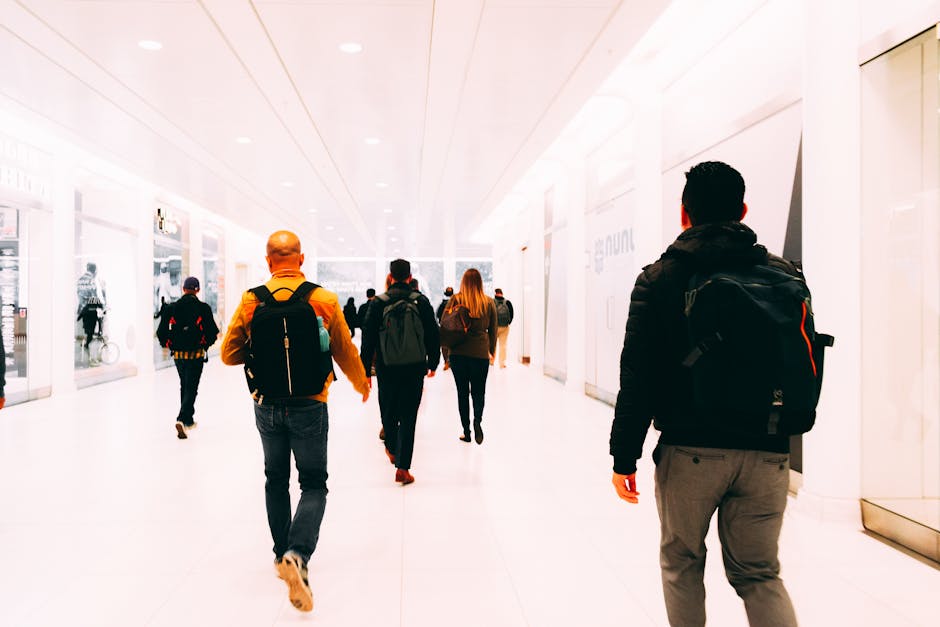Getting Through Airport Security Like a Pro
Airport security can be a stressful experience, but with the right approach, it doesn't have to be. This article provides practical strategies and expert tips to help you move through airport security quickly and with minimal hassle.
Understanding TSA Regulations and PreCheck
The Transportation Security Administration (TSA) has established specific regulations that every traveler must follow. Familiarizing yourself with these rules before you reach the airport can save time and reduce frustration. The most common regulations pertain to liquids, electronics, and prohibited items.
The 3-1-1 rule allows travelers to carry liquids in containers of 3.4 ounces or less, packed in a single quart-sized zip-top bag. Larger quantities must be checked in. Electronics like laptops must be removed from bags and placed in separate bins during screening unless you are enrolled in TSA PreCheck.
TSA PreCheck is a program that allows pre-approved travelers to bypass some standard security procedures, such as removing shoes or belts and taking out laptops and liquids from their bags. According to TSA's official website (tsa.gov), more than 10 million travelers have signed up for PreCheck, which significantly speeds up the screening process. Enrollment requires a background check, fingerprinting, and an $85 fee for a five-year membership.
When considering TSA PreCheck, weigh the costs against your travel frequency. If you fly more than twice a year, the time saved might justify the expense.
Preparing Your Carry-On
Effective packing can make your experience at airport security much smoother. The way you pack your carry-on can either speed up or slow down your experience at the checkpoint.
- Liquids: As mentioned earlier, ensure that all your liquids comply with the 3-1-1 rule.
- Electronics: Place larger electronics like laptops or tablets at the top of your bag for easy access during screening.
- Clothing: Wear slip-on shoes and avoid belts with large buckles to make the process smoother.
- Prohibited Items: Double-check that you haven’t packed any prohibited items like sharp objects or flammable liquids.
A well-organized carry-on not only streamlines your travel experience but also prevents potential holdups that may occur when you have to rearrange items during security checks.
Managing Security Checkpoints
The time spent waiting in line is often what travelers dread most about airport security. There are ways to minimize this wait and make it more manageable.
First, arrive at the airport early enough to account for potential delays at security. It's generally recommended to arrive two hours before domestic flights and three hours before international flights. Peak travel times like holidays may require even earlier arrival.

If available at your airport, use expedited lanes such as TSA PreCheck or CLEAR (clearme.com). CLEAR uses biometric data for identity verification, allowing travelers to skip ID checks altogether and proceed directly to security screening. Though it comes with a higher annual fee compared to TSA PreCheck ($189 per year), CLEAR offers faster access to security lines.
If you're flying with an airline that offers priority boarding or first-class service, this may also include access to expedited security lanes. Check with your airline before you fly to see if this benefit is included with your ticket.
Handling Special Situations
Certain situations can complicate the airport security process, such as traveling with children, pets, or medical equipment. Preparing for these situations in advance can make all the difference.
If you're traveling with children under 12 years old, they can keep their shoes on during screening. Strollers and car seats need to go through X-ray machines but should be collapsible for ease of handling.
Travelers with medical conditions that require them to carry special equipment should notify TSA officers before screening begins. Devices such as insulin pumps and oxygen tanks often need extra evaluation but are allowed once they receive approval from security personnel. The TSA offers a helpline called TSA Cares (tsa.govfor individuals with disabilities or health issues who require support when going through security protocols.
Quick Reference Table: What You Can Bring Through Security
| Item Category | Allowed in Carry-On? | Allowed in Checked Baggage? |
|---|---|---|
| Liquids (under 3.4 oz) | Yes (in quart-sized bag) | Yes |
| Laptop | Yes (remove during screening) | No restriction |
| Pocket Knife | No | Yes |
| Batteries (Lithium-Ion) | Yes (installed in device) | No (in bulk) |
| Aerosols (Hairspray, Deodorant) | No (over 3.4 oz) | Yes (in limited quantity) |
Tips for International Travelers
If you're traveling internationally, additional layers of preparation are essential as rules vary between countries. Always check both your departure and destination country's security guidelines before you pack.
Certain countries have stricter regulations regarding electronics and food items in carry-ons. Some European airports may require all electronic devices larger than a smartphone to be removed from bags and placed in separate bins during screening (euronews.com). Also keep in mind that not all countries allow food items like fresh fruit or meat products through customs upon arrival.
Avoid carrying anything that might raise concerns at international checkpoints, things like dual-use items or large sums of cash may attract unwanted scrutiny.Finally understand
Sailing smoothly through airport security boils down primarily two things: preparation & awareness. Be aware of current TSA regulations plus adequately prepared for any indifferent situations will decrease stress levels.